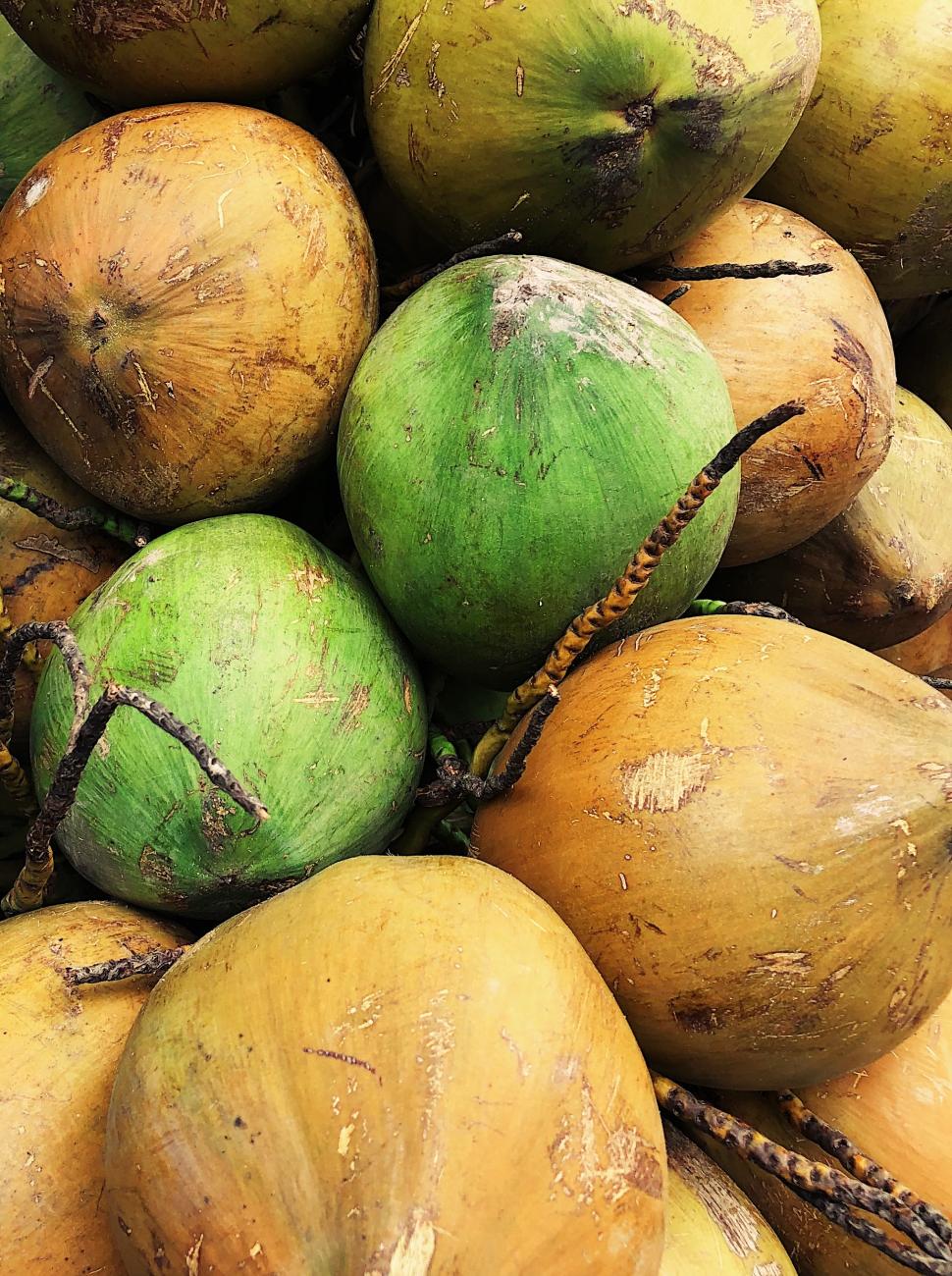
Old coconut trees are the legacy of the global copra trade, which peaked in the early twentieth century. As the industry declined there was little incentive to replant, despite governments’ and development agencies’ best efforts to find alternative uses and provide new seedlings. Today many coastal plantations are characterised by row upon row of tall, spindly trees that produce very few nuts – an estimated 120,000 hectares of precious coastal land across the Pacific is thus occupied, roughly equivalent to the area of Samoa’s main island of Upolu.
“We’ve been looking for a way to add value to old coconut palms for decades ... We’ve studied the properties of the wood, and experimented with milling, and various products. Cocoveneer is a new product for us, and it seems to have real potential.”
— Semi Dranu of the Timber Utilization Division of Fiji’s Department of Forestry.
An ACIAR project is investing in the technology to peel coconut palms with an aim to turn old, non-productive coconuts into a high-value product—cocoveneer—with potential benefits along the supply chain, from coastal communities who own the plantations, to timber mills, furniture makers, retailers and exporters.
The existing palms do perform useful services—protecting vulnerable coasts from erosion, for example—and the challenge is to preserve these benefits while encouraging the transition to more productive uses of the land.
The Challenges of Cocowood
Wood from the coconut palm has characteristics that make it harder to work than the wood from trees. Coconut wood has a variable density, which poses one of the biggest challenges. Stems are dense and hard on the outside, but have a soft core, so they cannot efficiently be sawn into uniform planks of useful size. The fibres that give the wood its strength cause another challenge as they tend to spiral up the trunk, causing conventional planks to warp and twist as they dry. Earlier ACIAR projects looked at the technical and economic feasibility of producing cocowood timber, thus identifying veneer as a ‘best bet’ solution. It is expected that the hard outside of the stems can be peeled into uniform thin layers that can then be used to ‘finish’ products made of less attractive or softer woods. Because of its hardness, as well as its attractive appearance, cocoveneer particularly lends itself to flooring.
“The project is still in the experimental stage ... We are trying to address the many components that need to ultimately come together for success. We’re looking at the technical side of producing the veneer – the equipment, the skills and training, and the industry partnerships – and at the same time we’re studying the market potential, and broader economics. There’s also the supply side – working with the communities to source the old coconut palms, and making sure they benefit from the process. Finally, we’re also looking at uses for the soft core left behind after peeling. If we can find a use for that as well, the project will truly be a win–win.”
— Greg Nolan, Project Leader and Director of the Centre for Sustainable Architecture with Wood at the University of Tasmania.
Sourced from Malaysia, which has its own cocoveneer industry, a ‘spindleless’ lathe was modified by project partners at the Queensland’s Department of Agriculture, Fisheries and Forestry, and shipped to Fiji. The installation of this lathe at the Timber Utilization Division’s headquarters in Suva was a significant acheivement of the project. Demonstrations during 2014 were met with a great deal of interest, resulting in one commercial company in Fiji investing in a similar lathe, with several others considering purchases as well. At approximately US$60,000 for the basic unit, the lathes are affordable for small and medium processors, which is how industry growth is envisaged in the Pacific islands.
Ideas for the soft core include chipping it to use as packing material, or turning it into ‘biochar’ which can be used to improve soils. To explore this latter potential use, collaborative trials are under way with the ACIAR ‘soil health’ project.
The Markets
At the other end of the value chain, the project is assessing the potential markets for cocoveneer and its products. Export markets are the most lucrative, and building these is an ultimate aim. A survey in Australia gave promising indications, with positive feedback from designers and architects who liked the colour and even grain of the cocowood. The wood has an ‘exotic’ appeal, and cocowood from other sources is already building a market in France, a country known for its sophisticated tastes. A less glamorous but potentially large market is shuttering for large cement works, which needs one very hard ‘face’ on the plywood, and currently uses non-sustainable hardwoods from Asia.
An additional marketing ‘angle’ for Pacific cocoveneer and its products is its environmental and ‘fair trade’ credentials. The clearing of old plantations will free up the land for more sustainable and profitable land uses, perhaps still including coconut palms but incorporating other fruits and food crops, and local communities will receive fair payment for the palms.
The next phase of the project, in June 2015, involves demonstrations of the entire process from harvesting of trees, to peeling trials by a commercial partner (an established plywood manufacturer) on Vanua Levu, and parallel composting trials with the residues. Project partners from Samoa and Solomon Islands will be there to witness the results, as well as many interested groups from Fiji and overseas.
“We still have a long way to go, and as with all experimental work there are many risks ... But if we can build a successful cocoveneer industry in the Pacific islands, there are potentially great benefits at all levels of the economy. We’d have finally solved the senile coconut problem and provided an incentive for renewal – that would be quite a result.”
— Greg Nolan